#Elephants foot
Explore tagged Tumblr posts
Text
It's Elephants Foot Friday!!!!
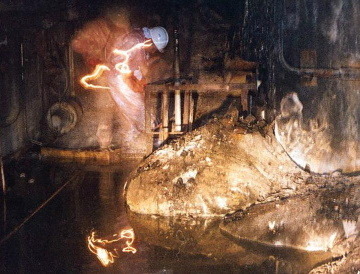
RB to instantly receive 8000 roentgens of radiation
28K notes
·
View notes
Text

2K notes
·
View notes
Note
truly hate that, despite ur blog name, u need to have a disclaimer warning against tying a fucking cinder block to ur head while driving
People so quickly forgot what happened after my fact about the benefits of replacing powdered elephant toenail aphrodisiacs with powdered Chernobyl elephant’s foot.
The Chernobyl Elephant is only now recovering from near-extinction.
280 notes
·
View notes
Text
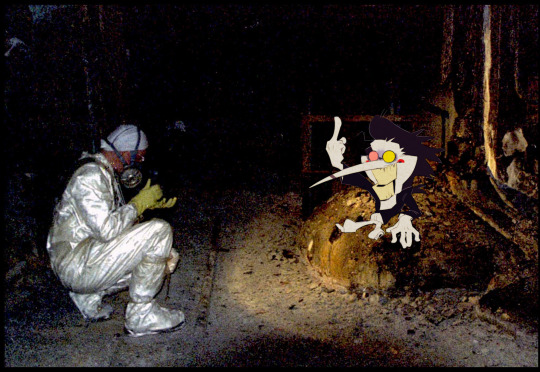
CHILLIN" [For a shilling] 0N MY [Bag of peas] ??/ get the hell. out.
#deltarune#lot of thing si havent posted but shoulf post probs#spamton#spamton g spamton#deltarune chapter 2#my art#elephants foot
548 notes
·
View notes
Text
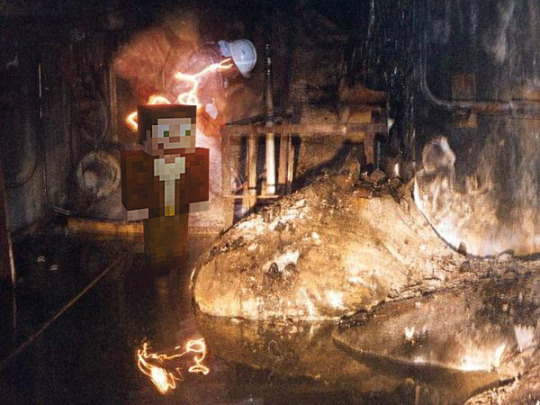
#I posted this one to my main blog already before the creation of this one but I’m proud of this edit so you bet im posting it again#goodtimeswithscar gets irradiated#goodtimeswithscar in a location#hermitcraft#mcyt#elephants foot
404 notes
·
View notes
Text

Impulse oh my god GET OUT!!!
47 notes
·
View notes
Text
“The picture is as beautiful as her soul.”
The picture, in question:

Yeah.
I think this was intentional on the artist’s part.
Fair play to him. (Vincent Namatjira)
Gina Rinehart is a GHASTLY woman.
A putrid, bigoted mining magnate and heiress.
A textbook example of the vulgar, idle rich.
(Ghastly as in stupid, unpleasant, and just AWFUL! Look her up!)
I like to think that this portrait shows her True Self.
The evil lurking underneath.
Even if it looks like she was exposed to the Elephant’s Foot at Chernobyl and started melting.
Still.
The picture is as beautiful as her soul.
Her dead, flint and shite coated, blackened, bloated, corpulent, empty soul!
And she doesn’t want anyone to see this portrait.
You know what that means!
Feel free to reblog.
Reblog the SHIT out of it!
#dougie rambles#personal stuff#australia#my poor attempt at a joke#in question#shitpost#vincent namatjira#gina rinehart#fuck Gina Rinehart#auld bitch#nasty woman#vent post#political crap#sort of#chernobyl#elephants foot#nightmare fuel#reblog this#reblog the shit out of this#feel free to reblog#fuck billionaires#portrait#art#painting#paintings#caricature#streisand effect#National gallery of Australia#artwork#disgusting object
27 notes
·
View notes
Text
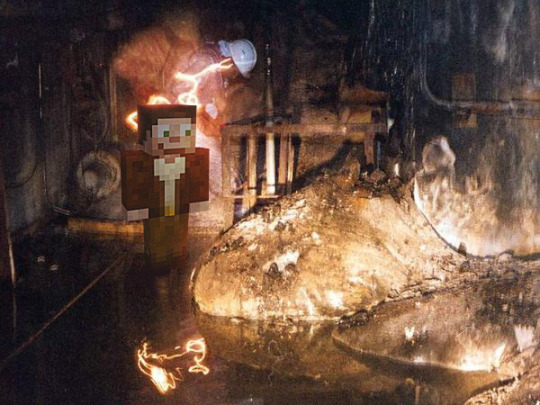
what’s he doing there
#goodtimeswithscar#hermitcraft#hermitcraft memes#elephants foot#hes going back to hermitcraft as a radiation hazard
82 notes
·
View notes
Text
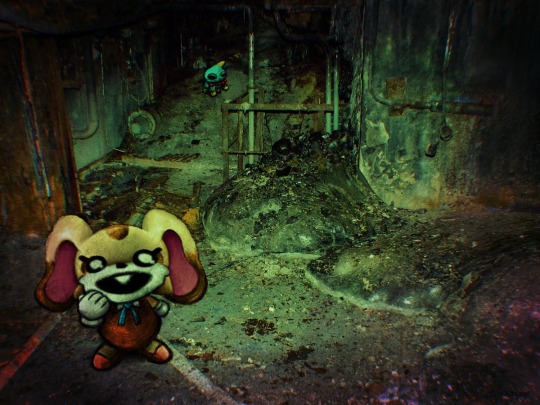
rabbit found in Chernobyl
#sth#sonic#sth fanart#sonic the hedgehog#cream the rabbit#cheese the chao#chernobyl#elephants foot#idk
64 notes
·
View notes
Text

Elephant's Foot Mickey
135/365 #hunt the corium
The Elephant's Foot of Chernobyl has been something that's long fascinated me, because it's a material that even looking at can harm you, and being close to it for 20 seconds at the time was able to kill you. While it's power has been decaying over the decades, it's still a mass of toxic waste, formed from the molten mass from the reactor, dropping down through the facilities' floors from sheer heat and radioactive matter.
I am making 365 new versions of Mickey Mouse for the public domain and releasing them under public domain all year long.
You can join the initiative to #hunt the mouse or suggest a theme yourself via my ask box.

#mickey mouse#character design#hunt the mouse#art#public domain#artwork#mickey#chernobyl#elephants foot#nuclear
23 notes
·
View notes
Text





comp of Elephants’ Foot edited with cute little bows on it
9 notes
·
View notes
Photo

𝔗𝔥𝔢 𝔈𝔩𝔢𝔭𝔥𝔞𝔫𝔱'𝔰 𝔉𝔬𝔬𝔱 𝔬𝔣 𝔱𝔥𝔢 ℭ𝔥𝔢𝔯𝔫𝔬𝔟𝔶𝔩 𝔡𝔦𝔰𝔞𝔰𝔱𝔢𝔯, յգՑճ
𝔗𝔥𝔢 𝔈𝔩𝔢𝔭𝔥𝔞𝔫𝔱𝔰 𝔉𝔬𝔬𝔱 𝔬𝔣 𝔱𝔥𝔢 ℭ𝔥𝔢𝔯𝔫𝔬𝔟𝔶𝔩 𝔡𝔦𝔰𝔞𝔰𝔱𝔢𝔯. 𝔗𝔥𝔦𝔰 𝔡𝔦𝔰𝔞𝔰𝔱𝔢𝔯 𝔥𝔞𝔭𝔭𝔢𝔫𝔢𝔡 𝔦𝔫 յգՑճ, 𝔱𝔥𝔦𝔰 𝔭𝔦𝔠𝔱𝔲𝔯𝔢 𝔴𝔞𝔰 𝔱𝔞𝔨𝔢𝔫 𝔦𝔫 յգգճ, 𝔬𝔫𝔠𝔢 𝔱𝔥𝔢 𝔯𝔞𝔡𝔦𝔞𝔱𝔦𝔬𝔫 𝔩𝔢𝔳𝔢𝔩 𝔴𝔞𝔰 𝔴𝔢𝔞𝔨𝔢𝔫𝔢𝔡.
#The Elephant's Foot of the Chernobyl disaster 1986#elephant's foot#Chernobyl#Chernobyl disaster#1986#80's#80s#ukraine#disaster#radiation#picture#Elephants Foot
296 notes
·
View notes
Text
The Search for the Fuel: The Elephant’s Foot
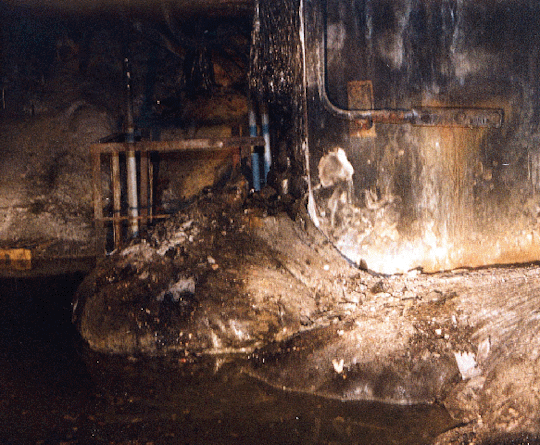
From the first days of the accident, locating and monitoring the 190 tons of nuclear fuel that had been in the fourth reactor at the time of the explosion was a top priority for the commission overseeing the cleanup. They wanted to ensure that no further disasters would unfold at Chernobyl; with the Soviet Union's international prestige already significantly battered, it was critical that they felt in control of the situation once more. After the initial plume of radionuclides from the burning reactor declined significantly in the early days of May 1986, it was established by the scientists assisting the Commission that the nuclear fuel had three distinct hazards that it could present. These were a radioactive hazard, a nuclear hazard, and a thermal hazard.
Perhaps the most obvious, the radioactive hazard was that of the aforementioned radioactive cloud rising from reactor 4. Although it had decreased significantly, it was still a danger and could potentially flare up again unless measures were taken to prevent it.
The nuclear hazard was the fear of a new uncontrolled nuclear chain reaction like the one that had initially destroyed the reactor. The state of the core was unknown at this time, and scientists had to determine if any of the reactor assembly was still in place and if it or any other mass of fuel had the necessary elements to sustain another catastrophic reaction. Basically, it was a possibility that the fuel could gather in such a way that a new nuclear chain reaction would start.
Finally, the thermal hazard was that of the hot nuclear fuel melting through the concrete of the unit block and into the Earth below. This is known as the “China Syndrome” after a movie of the same name. It was also feared at the time that the fuel could melt down into the bubbler tanks below the reactor, which stored a large reservoir of cooling water, and cause a significant steam explosion. This was the main concern of the government commission and the most effort was put in place to reduce this hazard first.
Having established the potential dangers of the fuel the Commission wanted absolute assurance that the hazard was not an immediate threat to the safety of the workers at Chernobyl and the world at large.
This undertaking was assigned to the team of experts assembled by the Kurchatov Institute, a scientific institute for the study of nuclear physics. It was established early on that most fuel was somewhere within the ruins of the fourth unit, since very little was ejected by the explosion. The building itself was enormous, with winding passages known only to those who worked for years in its labyrinthine walls.
Below: A schematic diagram of the fourth unit block seen from the west. The dimensions of the building are marked in meters. Note the enormous region of rooms located below the reactor core (Closed Reactor Space on this diagram). The area at the bottom of the building with the large vertical pipes are the bubbler tanks that held emergency cooling water for the reactor. This was the area scientists feared a steam explosion if the fuel lava gained access.
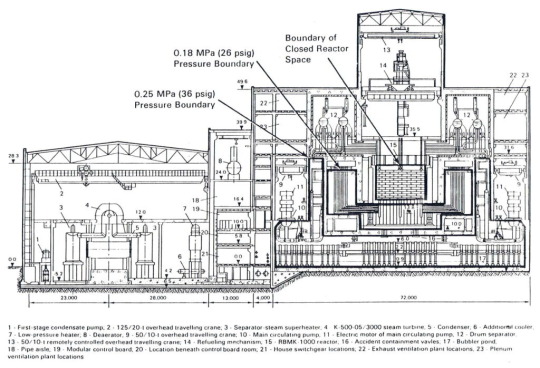
Adding to the problem of the scale of the search area was the fact that the building was potentially unstable due to the explosion of the fourth reactor. Rubble filled hallways and walls and ceilings sagged dangerously. Radiation levels fluctuated wildly within the building, with some areas almost entirely safe and others able to cause sickness and death in minutes. Even more pressing was that starting in the spring of 1986, the lower levels of the fourth unit began to slowly fill with fresh concrete. The Ministry of Medium Machine Building unit US-605, who were building the Sarcophagus to cover the radioactive remains of the unit, poured concrete into the structures of the Sarcophagus 24 hours a day. However, huge gaps and sinkholes existed in their work area, and a good portion of the concrete pumped into the Sarcophagus ended up deep in the lower levels of the block. This concrete blocked hallways, doors, and even (as they would later come to learn) covered up some of the melted fuel.
It was not until late spring of 1986 that exploration of the fourth unit block began. In June of 1986, two men were probing a steam distribution corridor in the southeast corner of the block from another corridor just below it using a powerful dosimeter which could detect radiation levels of up to 3,000 roentgens per hour. Since radiation levels in the stairway up to the corridor they were probing were already quite high (~25 roentgens per hour) they decided to send the detection head of the device up the stairs ahead of them via an assembly of metal rods. As soon as the device entered the corridor above, it went off the scale and burnt out. From this result the team was able to pinpoint a source of extreme gamma radiation.
In December of 1986, and expedition was mounted to room 217/2 to make visual contact with the suspected fuel concentration. Moving along the steam corridor this time, the team spotted a large metallic gray mass sitting neatly within the corner of the room. This formation was dubbed the "Elephant's Foot" (though some source translate it as"Elephant's Leg") due to its similarity to the leg of an elephant. The black glassy mass emitted over 8,000 roentgen an hour, deadly after just one and a half minutes (this is the maximum recorded emission, the levels would decrease significantly in the months after the disaster). For the first time, the theory of fuel lava was visually confirmed. The team branded the materiel "lava-like fuel containing masses" (LFCM).
Below: A picture of the Elephant's Foot from the direction which it was first observed. The railings just behind the main formation (Label 1) is the railing around the metal stairs from which the formation was first detected via dosimeter. Note the streaks of fuel above the formation showing where the fuel had dripped down from above. Label 4 denotes the "fresh" concrete that made its way into the building during the construction of the Sarcophagus.

Below: a view of room 217/2 from above. The red is the Elephant’s Foot, the orange is the fresh concrete, and the gray are the walls of the block. The Foot itself is the accumulation closest to the bottom left of the photograph. You can see there is more lava in an unnamed formation next to it.

After locating the fuel and taking some pictures, the team was tasked with analyzing what the lava was composed of. This may seem kind of obvious, but really it was not known what was in the LFCM. Presumably the fuel of course, but what else? It had been debated from the early days of the accident if the efforts to douse the fire and melting fuel with lead, boron, and sand had been effective (I refer here to the April 26th-May 12th aerial bombardment campaign of the reactor via helicopter- I will make a post on this effort at a later time and link it here). The contents of the fuel is an interesting topic which I will not go over more in this post. You can find more info on the quest to get a piece of the LFCM here.
After procuring a sample, one issue remained. They had found some of the fuel, but nowhere near the total amount. The grand majority of the fuel had yet to be located. By the summer of 1987 the fresh concrete that had run into the lower levels of the block began to cause real obstacles to the scientists. Many rooms suspected to contain fuel were inaccessible or could not be reached safely. A new approach was needed.
At the end of 1987 the Kurchatov team was reassigned to be part of the adventurously named Chernobyl Complex Expedition (CCE), an enormous liquidation effort that was tasked with exploring the interior of the Sarcophagus and locating the rest of the fuel in the years after the disaster. The CCE was composed to representatives from all the major Soviet scientific institutions, as well as builders and engineers. At its peak over 3,000 people worked as part of the Expedition. Through it all, the main core of this group was the scientists from the Kurchatov Institute.
Backed by resources of the entire CCE, the scientific team sought new approaches for searching for the fuel. After extensive discussion, the scientists came up with a rather ingenious solution. They would use coring drills like those used in oil drilling exploration set up in specially decontaminated rooms in the fourth unit block to drill so called ‘wells’ into inaccessible rooms. Through these they would send specially built monitoring equipment. These included thermometers, periscopes, and radiation sensors. Not only could they monitor the LFCM with this equipment, they could also obtain information about the building and the LFCM via analysis of the cores made by the drill. This allowed them to remotely locate, monitor, and sample the LFCM with minimal risk to personnel.
Below: A schematic of the wells drilled at the 9 meter mark below the reactor containment vessel. The purple lines are the wells themselves, with the gray being the concrete walls of the block. The large blue cross is the metal support Scheme S. I provided this as an example of how the wells were drilled and laid out. For more info, feel free to contact me.

Below: a member of the CCE operates a drill in the bowels of the fourth unit block. Note the protective clothing he is wearing to prevent the spread of airborne radiological contamination.
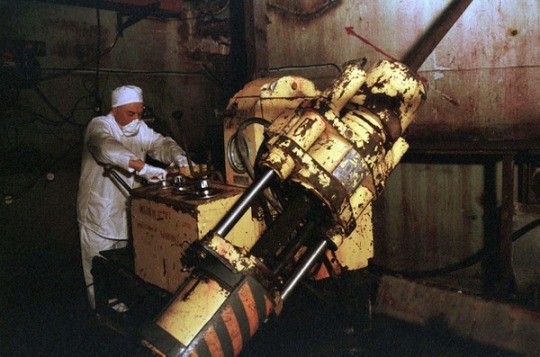
Between 1988 and 1992 a total of 134 wells were drilled between the 9 and 16 meter marks (the method by which levels of the plant are identified) and at the 20, 21, and 25 meter marks. It was eventually determined that over 180 of the 190 tons of fuel remained in the reactor block. The missing ten tons had either been blown out of the active zone and into the area around the reactor by the explosion, or had vaporized into the radioactive column that had emerged from the reactor in 1986. The remaining fuel within the block took the form of the LFCM, as well as dust. The dust created by the fuel is the main radiological enemy post 1986 and continues to be an issue to this day. Primarily composed of plutonium, the dust has thankfully remains mostly within the Sarcophagus. The LFCM, initially almost indestructible, has started to crumble and decay. As time goes on this creates even more dust, and the formations slowly erode away. This has contributed to a significant drop in gamma radiation emissions from the fuel masses and allowed for further study of the premises of the fourth unit block.
In 1994, the Complex Expedition used data collected from these wells to compile an official report on the status of the fourth unit block. With their findings published (and the Soviet Union dissolved) the CCE disbanded. Many of the scientists who worked on the expedition (and even some who were on the original Kurchatov Institute team) continued to work at Chernobyl for years. Expeditions are still sometimes mounted into the Sarcophagus, but they have not been carried out with any regularity since the early 2000s. However, visual inspection remains the only way to accurately monitor the condition of the LFCM.
You may be left wondering: how exactly did these men navigate such a radioactive environment without adverse effects? Once again I shall make a post on this in the future, but the main answer is: speed! Defense against radiation (with some exceptions) is as simple as not lingering in high radiation areas. To facilitate safe movement through the block, the scientists located and marked safe areas of reduced radiation levels (such as the room in this post) as well as dangerous areas to avoid. In the end, only a select few “Stalkers” actually set foot within the ruins of Reactor 4.
This post serves as the (admittedly lose) historical context for the exploration of the fourth unit block and the location of the LFCM. I will be making another post about the fuel rest of the fuel soon. I always feel bad for the other fuel formations because the Elephants Foot gets all of the attention. This will be a lot more technical, with locations and diagrams (joy of joys!) of the fuel as well as more context to its identification.
#chernobyl#elephants foot#radiation#history#autism#nuclear#nuclear power#reactor#china syndrome#chernobyl complex expedition#accidents and disasters#kurchatov institute#LFCM#chnpp#soviet union
103 notes
·
View notes
Text

i sure fucking HOPE not
27 notes
·
View notes
Text

5 notes
·
View notes